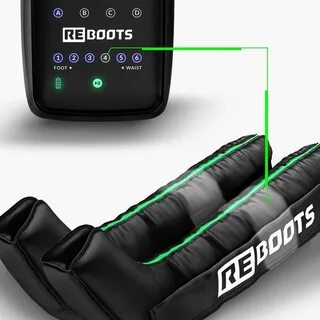In today’s competitive B2B environment, attracting leads is not enough; nurturing them effectively is essential for driving conversions. The Value Sequence Approach provides a structured framework to guide prospects through the buyer journey while delivering meaningful value at every stage. By focusing on incremental value, relevant content, and personalization, businesses can enhance engagement, build trust, and increase lead conversion rates.
Understanding the Value Sequence Approach
The Value Sequence Approach is a systematic method that sequences interactions to provide consistent value throughout the buyer journey. Unlike traditional lead generation methods that emphasize quantity over quality, this approach prioritizes meaningful touchpoints. Each step is designed to educate, engage, and move prospects closer to a purchase decision, ensuring that interactions are relevant and beneficial.
Creating Accurate Buyer Personas
Buyer personas are the foundation of the Value Sequence Approach. These personas capture detailed information about the target audience, including roles, challenges, goals, and preferred communication channels. With accurate personas, marketers can craft tailored messaging and content for each segment. For example, a technology manager may prefer detailed product specifications, while a business executive may focus on ROI and strategic insights. Detailed personas ensure that the Value Sequence Approach delivers targeted and effective engagement.
Mapping the Buyer Journey
Mapping the buyer journey is critical for implementing the Value Sequence Approach. It involves identifying touchpoints, decision criteria, and potential obstacles at each stage. Understanding the journey allows marketers to deliver content that aligns with the prospect’s needs and guides them through awareness, consideration, and decision phases. Effective mapping also accounts for multi-channel interactions and repeated touchpoints to create a seamless experience.
Delivering Incremental Value
A core principle of the Value Sequence Approach is delivering incremental value at every touchpoint. Instead of sending generic marketing messages, businesses provide actionable insights, resources, and guidance. For instance, a lead may begin by reading an industry blog, download a whitepaper on best practices, and then receive an invitation to a webinar or demo. Each interaction strengthens credibility, educates the buyer, and fosters trust in the brand.
Content Strategy Alignment
A robust content strategy is essential for executing the Value Sequence Approach effectively. Content should align with the buyer journey, providing education, solutions, and actionable insights at each stage. Blogs, eBooks, webinars, case studies, and videos should complement each other to create a seamless and engaging experience. Relevant content delivered at the right time helps prospects progress through the funnel efficiently and increases engagement.
Marketing Automation for Scalability
Marketing automation plays a crucial role in implementing the Value Sequence Approach at scale. Automation tools track user behavior, segment audiences, and deliver relevant content based on engagement. For example, when a lead downloads a case study, automated workflows can trigger follow-up emails with related resources or demo invitations. Automation ensures timely and consistent communication while providing data to refine sequences and optimize results.
Key Metrics to Monitor
Measuring performance is vital to ensure the Value Sequence Approach is effective. Key metrics include lead conversion rates, content engagement, time to conversion, and pipeline velocity. Monitoring these metrics allows marketers to identify bottlenecks, optimize messaging, and improve overall ROI. A data-driven approach ensures that marketing strategies remain aligned with buyer behavior and business objectives.
Personalization at Every Stage
Personalization enhances the Value Sequence Approach by tailoring interactions to each prospect. Beyond using a name in emails, personalization includes recommending content, suggesting relevant solutions, and anticipating questions based on previous behavior. By leveraging CRM and analytics data, marketers can provide tailored experiences that increase engagement, build trust, and improve the likelihood of conversion.
Sales and Marketing Alignment
The Value Sequence Approach fosters collaboration between marketing and sales teams. Marketing nurtures leads through sequenced content, while sales engages with prospects ready for high-touch interactions. Coordinated messaging and shared performance metrics ensure a seamless experience for leads. Alignment improves efficiency, reduces duplication, and enhances overall lead conversion outcomes.
Optimizing Multi-Channel Engagement
B2B buyers interact across multiple channels, including email, social media, websites, webinars, and events. The Value Sequence Approach emphasizes delivering consistent value across all channels. Multi-channel engagement reinforces brand authority, ensures a cohesive experience, and provides actionable data to inform the next steps in the value sequence.
Continuous Testing and Improvement
Continuous testing is critical to refining the Value Sequence Approach. Marketers can perform A/B testing, analyze engagement patterns, and adjust content and messaging to improve performance. Iterative improvements ensure sequences remain relevant, lead movement through the funnel becomes more efficient, and conversion rates continue to improve over time.
Technology and Analytics Integration
Integrating technology and analytics enhances the Value Sequence Approach. Predictive analytics can identify high-potential leads and recommend next-best actions. CRM platforms provide visibility into all interactions, enabling marketers to optimize sequences and measure outcomes. Technology-driven insights ensure data-informed decisions and improve lead generation performance.
Case Study Example
A B2B software company implemented the Value Sequence Approach to improve lead nurturing. They created detailed buyer personas, mapped the buyer journey, and sequenced content to match each stage. Automated workflows delivered personalized follow-ups based on engagement. Within six months, the company achieved a 37 percent increase in qualified leads, higher engagement with content, and a shorter sales cycle. This example demonstrates the tangible benefits of adopting the Value Sequence Approach.
Key Takeaways for B2B Marketers
To implement the Value Sequence Approach successfully, marketers should focus on creating accurate buyer personas, mapping the buyer journey, delivering value at each touchpoint, aligning marketing and sales, leveraging content marketing and automation, and continuously optimizing sequences. This approach enables B2B companies to generate smarter leads, nurture meaningful relationships, and achieve sustainable business growth.
Read Full Article : https://acceligize.com/featured-blogs/the-value-sequence-approach-for-smarter-b2b-lead-generation/
About Us : Acceligize is a global B2B demand generation and technology marketing company helping brands connect with qualified audiences through data-driven strategies. Founded in 2016, it delivers end-to-end lead generation, content syndication, and account-based marketing solutions powered by technology, creativity, and compliance.


